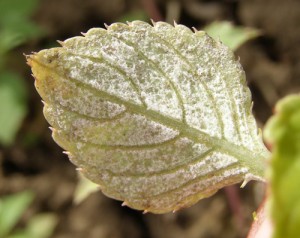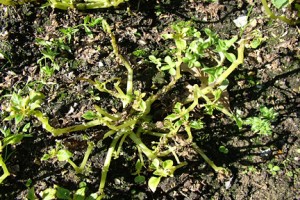What You Need to Know About Impatiens Blight (IDM)
Did you plant impatiens this year? Did they thrive at first and then suddenly collapse? Did your neighbor’s impatiens die in midsummer?
There is a new disease out there striking this staple of bedding plants. Your plants look healthy and grow well, then suddenly they become ill. You feed and water them, and before you know it, they are dead, sprawled lifeless on the ground. What hit them was a tiny spore from a fungus. It could have been in the soil you bought them growing in. It could have come into your yard on a soft summer breeze. But wherever it came from the result was the same—swift and certain death.
The disease is called Impatiens Downey Mildew (IDM) and it showed up first in Europe nearly ten years ago. Greenhouses treated it with fungicides and it seemed to be under control. In 2011 it returned, apparently having developed a resistance to available fungicides. And that year it came to America.
So what do you do if you were growing impatiens, one of the most popular annuals, in your garden or containers this year? First start with a thorough clean-up. Remove not just the plant but the soil and mulch in the area where it was growing. The fungal spores of IDM will be present and tests have shown those spores will easily survive our winters. The soil and mulch, as well as the plants, need to be bagged and disposed of where they will be burned or buried in a landfill. Soil from containers where impatiens grew must also be disposed of properly and the container thoroughly cleaned before storing for the winter.
What if you had no signs of disease this year? Some gardeners found their plants untouched while their neighbors impatiens crashed. Don’t take the chance that the soil is not infected. Dig, bag and dispose of the plant, soil and mulch just as if your impatiens had died along with others.
 But no matter how carefully you work to reduce the spore count on your property, next summer, the fungus will be wafting in on the wind, or in the mulch you buy or even on the plant itself. So what do you do?
But no matter how carefully you work to reduce the spore count on your property, next summer, the fungus will be wafting in on the wind, or in the mulch you buy or even on the plant itself. So what do you do?
First, don’t even think of growing impatiens in the same area until growers find a guaranteed cure, or breed IDM-resistant plants. New Guinea impatiens should not be counted on until there are definitive answers. Early reports said New Guinea impatiens were resistant to the fungus.
Better yet, use this as an opportunity to grow something entirely different. If you are looking for colorful bedding plants to grow in shade, try begonias, or coleus. A multitude of varieties are available in a seeming infinite number of sizes and colors. Or, try something you have never grown before. You can start the season with violas (pansies) and primroses and then see what the nurseries offer as spring becomes summer.
There are hundreds of wonderful, underused plants waiting in the wings that may find the impatiens’ disease is their big opportunity to become stars. Look for browallia with true blue flowers, nasturtiums, nemesia, cape fuschias, plectranthus and snapdragons. The names of some may not be familiar now, but you’ll love getting acquainted as a whole new look brightens your garden next summer.

